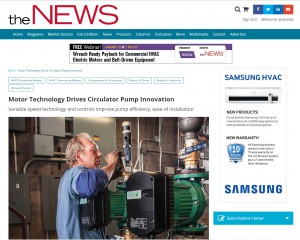As seen on cabuildingsnews.com – December 2015
Manufacturers and Service Providers Offer a Variety of Products and Strategies
HVAC SYSTEMS CAN USE AS MUCH AS 40% OF A BUILDING’S ENERGY, says the utility company Pacific Gas & Electric. “When properly designed, implemented, and operated, these systems ensure the comfort of the people in the facility in addition to ensuring the quality and financial viability of the processes and products produced. However, while simple in concept, most air handling systems are dynamically complex and highly interactive. A disturbance in one element can ripple out and affect the stability and viability of the entire system and the utility systems serving the air handling unit. In some cases, these issues manifest themselves in a manner that demands correction; tenants complain, product quality becomes substandard, or in extreme cases, the area serves becomes un-inhabitable.













